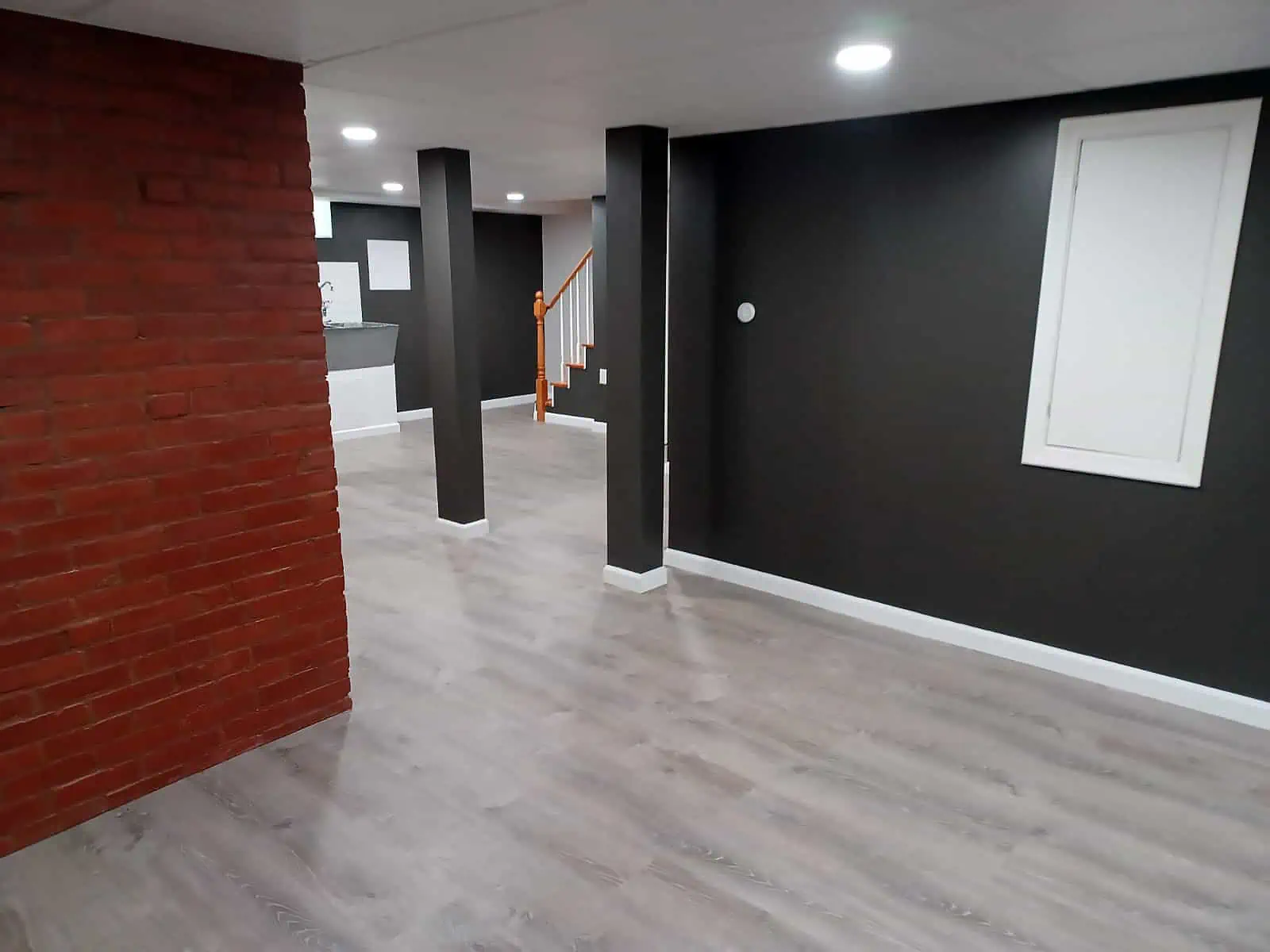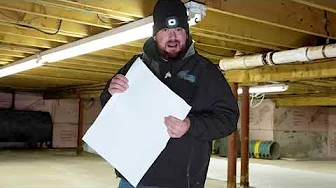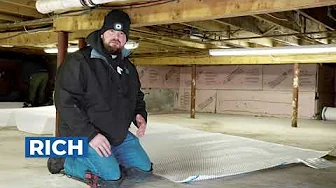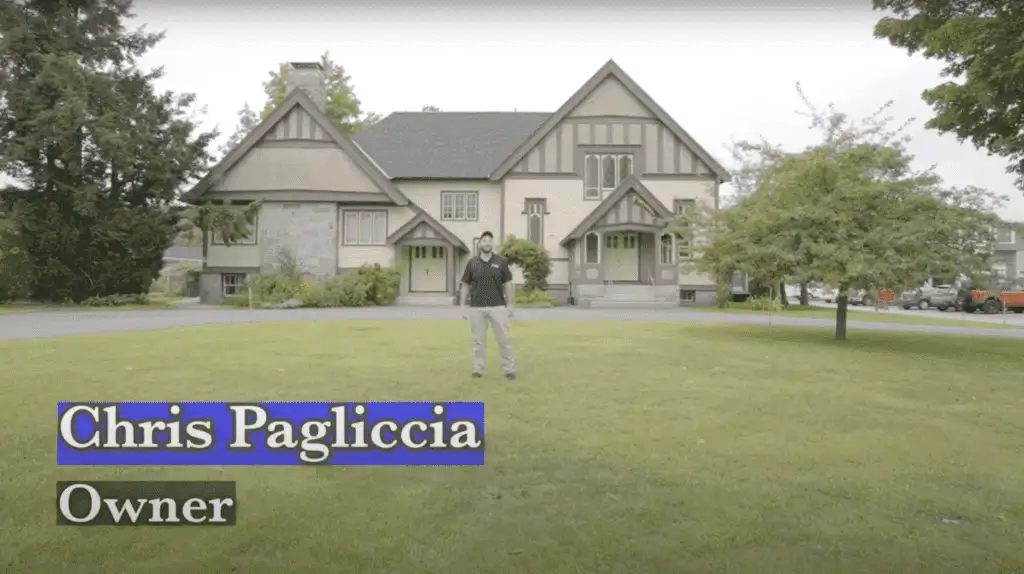Basement Finishing Malden MA
Basements are one of the most underutilized spaces in many homes. Often relegated to storage or left unfinished, they hold tremendous potential for adding functional and livable square footage. Finishing your basement can transform it into a versatile space, whether you need an office, a guest suite, or an entertainment area.
For homeowners in Malden, MA, investing in basement finishing not only improves your living space but can also boost the value of your property. Below, we’ll break down key considerations, practical steps, and ideas to help you make the most of your basement.
Real People - Real Great Results
Crawl Space Video Playlist
Why Consider Basement Finishing?
Let’s face it: an unfinished basement isn’t doing your home—or your family—any favors. It’s a square footage graveyard where cardboard boxes and old holiday decorations go to die. But with a little attention and investment, that wasted space can become the most functional area in your home. Here’s why finishing your basement is a no-brainer:
- Increased Usable Space: Think about all the ways you could use an extra few hundred square feet. Need a quiet spot for Zoom calls that doesn’t involve your kids barging in mid-meeting? Boom—home office. Want a designated space to host poker nights or binge-watch your favorite shows? Recreation room, incoming. A finished basement is like a Swiss Army knife for your home: flexible, multipurpose, and always there when you need it.
- Boost in Home Value: Let’s talk dollars and cents. Finishing your basement doesn’t just make your home more livable now; it makes it more attractive when it’s time to sell. Imagine walking a potential buyer downstairs into a fully finished space instead of apologizing for the spider colony that’s taken over your exposed foundation. It’s a strong return on investment, especially in a competitive market like Malden, MA.
- Energy Efficiency: New England winters aren’t forgiving, and an unfinished basement can act like a heat sink, stealing warmth from your home. A finished space, on the other hand, gives you the chance to insulate properly, sealing up all those leaky drafts. Think of it as a two-for-one deal: by making your basement cozier, you’re also making your entire home more energy-efficient.

Assessing Your Basement's Condition in Malden, MA
Before you begin tearing down walls or picking out paint colors, take a step back and assess your basement’s current state. Skipping this step can lead to costly mistakes or even safety hazards down the line. Malden, MA, with its unique climate and building conditions, presents a few specific challenges that need careful attention. Here’s what you should focus on:
Check for Moisture or Water Issues
In New England, basements and moisture go hand in hand. A damp basement isn’t just unpleasant—it’s a breeding ground for mold and a surefire way to ruin any renovation work you put in. The first move should be to check for water stains on the walls and floors, musty smells, or bubbling paint. If it feels slightly damp or smells faintly “earthy,” don’t ignore it. Malden’s seasonal rainfall and wet springs mean your basement might need extra waterproofing measures.
Fix the problem at its source. Patch up visible cracks in walls or floors with hydraulic cement, install a sump pump if flooding is a concern, and line the area with a vapor barrier to block moisture from creeping in. Exterior solutions, like grading your lawn to slope away from the house, can also be worth the effort. Don’t rush this—any problem left unfixed will only come back to haunt you, probably on the first rainy night after your project is complete.
Evaluate Ceiling Height
Unlike other parts of your home, basements often have to contend with low ceilings. Making them livable means checking if you meet Malden’s building code requirements for minimum ceiling height—usually around 7 feet, although it can vary. Small details matter here: even a few exposed pipes, beams, or ductwork can eat into precious vertical space.
If you come up short, don’t panic. Simple fixes like bulking up low-hanging pipes with boxed-in soffits or opting for recessed can lights instead of hanging fixtures can create the illusion of more space. If the height variance is significant, you may need to lower the floor or raise the ceiling, but keep in mind that these solutions typically require professionals and come with hefty price tags.
Inspect for Structural Concerns
The last thing you want is to finish your basement only to have structural issues turn it into a money pit—or worse, a safety hazard. Carefully examine your foundation for cracks, sagging beams, or uneven floors. Some signs, like hairline cracks, might not be a big deal, but larger splits or bowing walls could point to serious problems. Structural repairs are not the place to flex your DIY muscles. If anything looks off, bring in a licensed structural engineer to evaluate the situation. It’s better to spend a bit on an inspection now than to rip out drywall to fix a foundation issue later.
Ensure Safety Requirements
No matter how well-designed your basement is, it’s not truly livable unless it meets safety codes. Key considerations include adding at least one egress window or door for emergencies. This not only might save lives in the event of a fire but is also a requirement in Malden (and most places) for basements used as bedrooms or living spaces. Don’t forget about ventilation and air quality, either. Install an HVAC extension or a standalone ventilation system to keep air circulation steady. Finally, make sure you’ve got functioning smoke and carbon monoxide detectors installed where needed—this isn’t just practical, it’s peace of mind.
By tackling these issues head-on before design and construction, you’ll lay a solid foundation—literally and figuratively—for a successful and headache-free basement transformation.

Designing a Functional Basement Space
Your basement might be a blank canvas now, but step one in turning it into something useful is figuring out why you’re doing it. Purpose comes first. Everything—layout, materials, lighting—hinges on the space’s eventual role in your home. Don’t just slap up some drywall and call it a day; a judicious plan upfront will save a lot of headaches (and money) later.
Popular Basement Finishing Ideas
- Home Office: Need a quiet spot to focus? Make sure your office has sufficient lighting (natural light if possible, even if it’s just a strategically enlarged window well) and invest in sound barriers. There’s nothing worse than trying to work while the upstairs TV bleeds through thin flooring. Run extra outlets, too—offices gobble tech.
- Guest Suite: A comfortable guest space is all about privacy. Drop in a bedroom, a simple bathroom, and maybe a pocket door to give it that “separate quarters” vibe. Bonus points for cozy but durable materials, like luxury vinyl plank flooring. If the budget allows, consider one little “wow” feature, like a small built-in reading nook or a coffee bar.
- Recreation Room: This could be anything from a full-on home theater to a ping-pong-and-sports-bar vibe. Carpeting might seem cozy, but a hard-wearing and spill-resistant surface (like sealed concrete or tile) will save your sanity if someone tips soda during a movie night. Focus on lighting options—dimmable fixtures and task lighting go a long way in making your space multipurpose.
- Fitness Space: Gym vibes call for ventilation and tough, no-nonsense materials. Think thick rubber mats or interlocking gym flooring. Slap some mirrors on the walls to make the space feel bigger than it is, and make sure your layout leaves adequate elbow room for that kettlebell swing.
Choosing Materials
Basements are a different beast when it comes to materials. Moisture lurks, and choosing the wrong finishes can create costly disasters down the road. Here’s the stripped-down approach:
- Flooring: Forget traditional carpet—it’s a mold petri dish waiting to happen. Instead, aim for moisture-proof options like tile, luxury vinyl plank, or epoxy-coated concrete.
- Walls: Your drywall needs to be mold-resistant; the green or purple versions at the hardware store aren’t upsells—they’re life-savers. If drywall feels too conventional, wood paneling or beadboard can add charm. Just keep that vapor barrier secure behind it all.
- Ceilings: Sure, drop ceilings scream “basement,” but some are sleeker than you’d expect and give you easy access to wires and plumbing. If height is tight, painting exposed beams in a matte black or white can achieve a minimalist, modern aesthetic.
Functional Hacks While You’re at It
- Hidden Storage Tricks: Built-in shelves or under-stair storage can keep your space usable without turning it into a clutter cave.
- Smart Lighting: The further underground you go, the more intentional you need to get. Layered lighting—overhead fixtures, track lights, wall sconces—is your friend.
- Zone the Space: If you’re mixing uses (guest suite/recreation room combo, anyone?), subtle partitions or rugs can separate different vibes without making the area feel compartmentalized.
At the end of the day, this is your basement, and it should be an extension of your lifestyle. Design around how your family actually lives, not some idealized vision you’ll never use. Aim for practical, intentional, and cost-effective without cutting corners where it matters most.
Managing the Costs of Finishing Your Basement
Let’s be real—basement finishing can quickly eat through your budget if you’re not careful. But going overboard isn’t inevitable, even if you’re aiming for a polished, professional look. The key is knowing where to spend, where to save, and what tasks you might want to handle yourself. Here’s how to navigate the financial side of bringing your basement vision to life while keeping costs manageable.
- Set a Realistic Budget (and Stick to It): Start by identifying how much you’re willing to spend. A typical basement finishing project in Malden, MA, can range from $30 to $100 per square foot, depending on the complexity. Know your ceiling for spending (no pun intended), and make sure every decision flows from that number. It’s easy to get carried away picking out premium tiles or custom cabinetry, but a clear budget will help keep you grounded.
- DIY Where It Counts: Labor is often one of the biggest expenses in a remodeling project, so consider tackling the low-stakes jobs yourself. Painting walls, installing light fixtures, or assembling storage units are great ways to cut costs without compromising quality. Just leave electrical work and plumbing to the pros—guesswork in those areas can give you an even bigger bill down the line.
- Start with the Essentials: A common rookie mistake is blowing money on optional extras before nailing down the basics. Focus your budget on the foundational elements: moisture-proofing, insulation, flooring, and lighting. These are the pieces that keep your basement functional long-term. Once those are taken care of, you can think about splurging on custom shelving or tech setups.
- Repurpose and Save: Consider using materials you already have or buying from discount sources. Can that old loveseat in the attic become the cornerstone of your recreation room? Could your entertainment stand be refinished rather than replaced? Also, check out clearance aisles and local building material surplus stores for deals on flooring, tiles, or hardware. Small savings here and there add up.
- Phase Your Project: Who says you have to tackle the entire basement at once? By breaking your project into phases, you can spread costs over time without sacrificing quality. For instance, you might start by finishing a home office space this year and tackle the guest suite or gym later. This approach also allows you to adjust your budget as you go, based on actual spending rather than estimates.
- Don’t Skimp Too Much: While saving money is essential, cutting corners on critical areas—like waterproofing or using sub-par materials—can backfire. Cheap solutions may lead to unforeseen problems (think: mold or structural damage) that’ll cost even more to fix. Spend on areas that matter, especially anything related to the longevity of your basement and the safety of its occupants.
- Talk to Local Experts: Contractors or property professionals familiar with Malden, MA, might be able to offer local tips to help stretch your budget. They’ll know where to source cost-effective materials, what local rebates might apply for energy-efficient upgrades, and how to sidestep pricey mistakes specific to the area (looking at you, moisture issues). Don’t be shy about asking questions—often, their insights can translate into serious savings.
Managing your basement finishing costs takes discipline, creativity, and a touch of realism. Be strategic about where to save, smart about where to spend, and intentional in how you phase your upgrades. With a bit of planning, you’ll end up with a space that’s worth every penny.
Local Considerations in Malden, MA
When it comes to basement finishing in Malden, MA, the devil is in the details—and those details start with understanding the unique demands of this locale. From specific building codes to weather-driven challenges, tailoring your project to Malden ensures a safer and longer-lasting investment. Let’s get into the nuts and bolts.
- Building Permits: Any significant remodeling in Malden requires you to secure proper permits. For basements, this often means permits for electrical, plumbing, and structural changes. Don’t skip this step—it not only ensures your work meets code but also helps you avoid future headaches when selling your home. Check out the City of Malden’s website or visit their local government office for a straightforward breakdown of permit requirements. Knowledge is power—and in this case, protection.
- Energy Efficiency Standards: Massachusetts has some of the most progressive energy efficiency requirements in the nation, and Malden is no exception. While insulating your basement is a given, it’s worth looking into Mass Save® programs or city-specific rebate opportunities for energy-efficient upgrades like zoned heating. These can offset costs while bumping up your home’s eco-cred.
- Climate Factors: Let’s face it, Malden isn’t exactly known for its mild, predictable weather. Winters can be brutally cold, while spring often brings damp, rainy conditions. This makes moisture management and insulation non-negotiable. Think of a vapor barrier and proper drainage systems as your basement’s first line of defense. Add in heating solutions—radiant floor heating is a popular option—and your basement space won’t just survive Malden’s climate, but thrive in it.
Thinking locally isn’t just about adhering to codes and battling the weather—it’s about creating a basement that works harmoniously with your environment. Nail down these Malden-specific factors, and your finished space will be durable, efficient, and undeniably yours.
Hiring Professionals vs. DIY in Malden, MA
Some basement projects are perfect for a DIY approach, but others? They’re better left to the pros. Knowing where to draw that line can save you time, frustration, and potentially thousands of dollars in mistakes.
When To Hire a Professional
If your basement finishing project involves anything beyond surface-level cosmetic changes, it’s time to call in the experts. Tasks like structural repairs, electrical wiring, and plumbing aren’t just tricky—they’re critical to get right. A poorly executed job in these areas can lead to avoidable headaches, from failed inspections to safety hazards.
For homeowners in Malden, MA, working with professionals also means you’ll have someone who understands local building codes, permits, and quirks of the area. For example, older Malden homes often have basements with unique challenges, like outdated drainage systems or uneven foundations. Professionals can identify these issues before they spiral into major setbacks.
Planning a large-scale transformation or a complex design, like a guest suite with a full bathroom or a home theater with custom wiring? It’s almost always worth the investment to hire someone with experience in basement remodeling. Look for contractors with Malden-specific expertise—check reviews, ask for references, and make sure they’re licensed and insured.

DIY-Friendly Tasks
That said, if you’re inclined to roll up your sleeves, there’s plenty of work you can handle yourself, especially as you edge closer to the finishing touches. Painting walls and ceilings, installing trim, assembling furniture, or even laying down simple flooring like interlocking vinyl planks are all manageable for the average DIYer. These tasks allow you to add a personal touch while keeping some money in your pocket.
The key is to be realistic about your skills and time. Sure, learning to install drywall on YouTube at 11 PM might sound adventurous, but will it still sound fun if something goes sideways and you’re facing a midnight run to the hardware store? Tread carefully.
Striking the Right Balance
Many homeowners in Malden find success with a hybrid approach. Hire the pros for foundational work or anything requiring technical expertise, and take on smaller, budget-friendly tasks to put your stamp on the space. For instance, once your contractor has finished the walls, flooring, and electrical setup, you can step in to finesse the decor and minor details.
Ultimately, the choice between DIY and professional help depends on the complexity of the project, your comfort level, and your budget. Whatever you decide, planning ahead and knowing your limits will keep your basement project on track—and your sanity intact.
Maintaining Your Finished Basement
Finishing your basement is a significant investment, and like any other part of your home, it demands ongoing care to protect that investment. A low-maintenance approach goes a long way in keeping the space functional and problem-free without adding unnecessary stress to your to-do list. Here’s how to stay ahead of potential issues and preserve the space you’ve worked hard to create.
- Keep It Dry: Basements are naturally prone to moisture, even after taking the proper precautions during the finishing process. To minimize the risk of long-term damage, run a dehumidifier consistently, particularly during Malden’s humid summer months. Allocate time every few months to inspect your basement for water leaks—pay attention to pipes, walls, and flooring near exterior doors and windows. If you find any potential issues, don’t wait. Address them promptly before they escalate into costly repairs.
- Monitor Air Quality: Since basements often lack the natural ventilation of above-ground spaces, it’s crucial to maintain clean air circulation. Ensure any installed ventilation systems, like air exchangers or exhaust fans, are operating effectively. Replace air filters regularly to prevent dust, allergens, or mold spores from accumulating. For good measure, consider an air purifier if your basement gets heavy use as a recreational or guest space.
- Regular Upkeep: Think of your finished basement the same way you do the rest of your home. Carpets should be vacuumed frequently, hard flooring mopped when necessary, and furniture cleaned based on its material type. Over time, painted walls can scuff or fade—repainting every 5–7 years will help the space maintain its fresh, polished look.
- Beyond routine cleaning, don’t neglect any materials or finishes specific to basement needs. Check moisture-resistant surfaces for signs of wear, ensure sealants on concrete or vinyl floors remain intact, and touch up paint on exposed wood or beams whenever it starts to wear down.
- Stay Ahead With Seasonal Inspections: Malden’s seasonal swings can challenge even a well-prepped basement. Before winter, ensure your heating system is effective in preventing cold spots in the basement and double-check window seals for drafts. In spring, rainfall can push your waterproofing measures to the limit—inspect sump pumps and ensure gutters or downspouts are directing water away from the foundation. A little extra vigilance during transitional weather can keep maintenance minimal year-round.
- Make Adjustments as Needed: The beauty of a finished basement is its flexibility. As your family’s priorities and tastes evolve, you may want to tweak the space. Maybe that home gym isn’t seeing much use, and it’s time to swap it for a reading nook with cozy furniture. Periodically review how you’re using the space and make changes as needed to keep it functional and enjoyable.
A properly maintained basement isn’t a chore—it’s an extension of how you want to feel every time you step into your home: calm, at ease, and ready for whatever purpose that space now serves. Handle the small things consistently, and your basement will continue to pay dividends for years to come.
Conclusion
Finishing your basement in Malden, MA, isn’t just a home upgrade—it’s a strategic move that combines functionality, comfort, and investment. Whether you’re carving out space for a home office, a guest suite, or simply a cozy hangout, the upfront effort pays dividends in usability and property value. The key is to approach the project with clear priorities: assess your space, focus on moisture and insulation, and invest in durable finishes that match New England’s climate challenges. By balancing local regulations, professional expertise, and budget-friendly tactics, you can transform an overlooked basement into a standout feature of your home. It’s less about extravagance, more about smart, purposeful living.
Reviews from Happy Customers
Our top priority is customer satisfaction, and we work closely with clients to understand their unique needs and goals.






